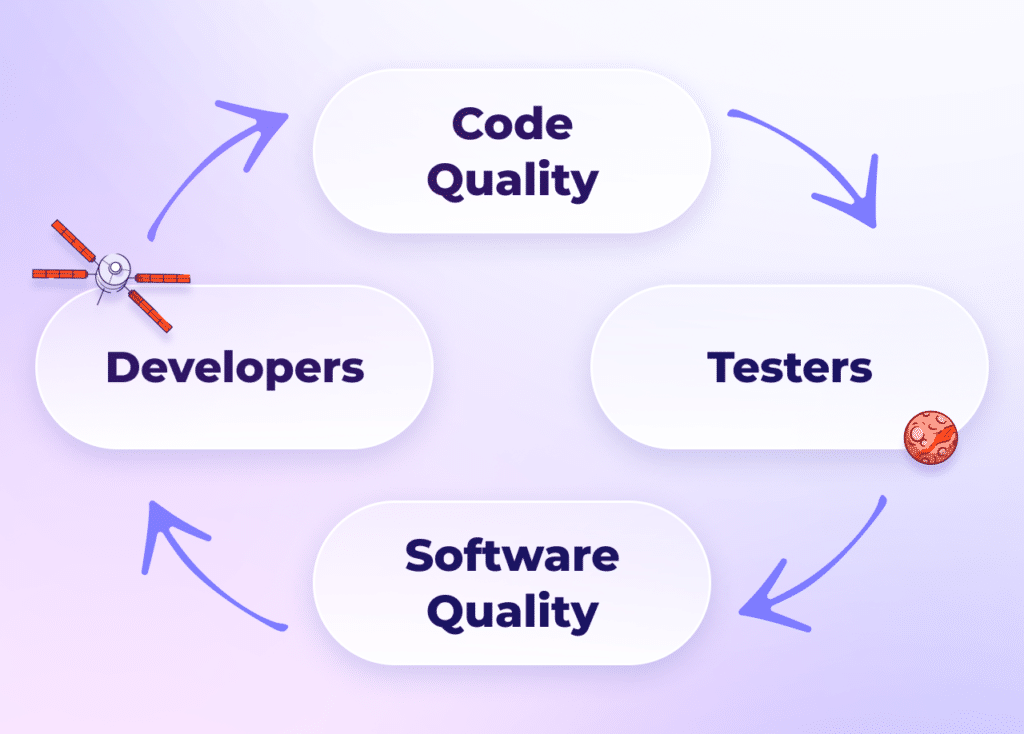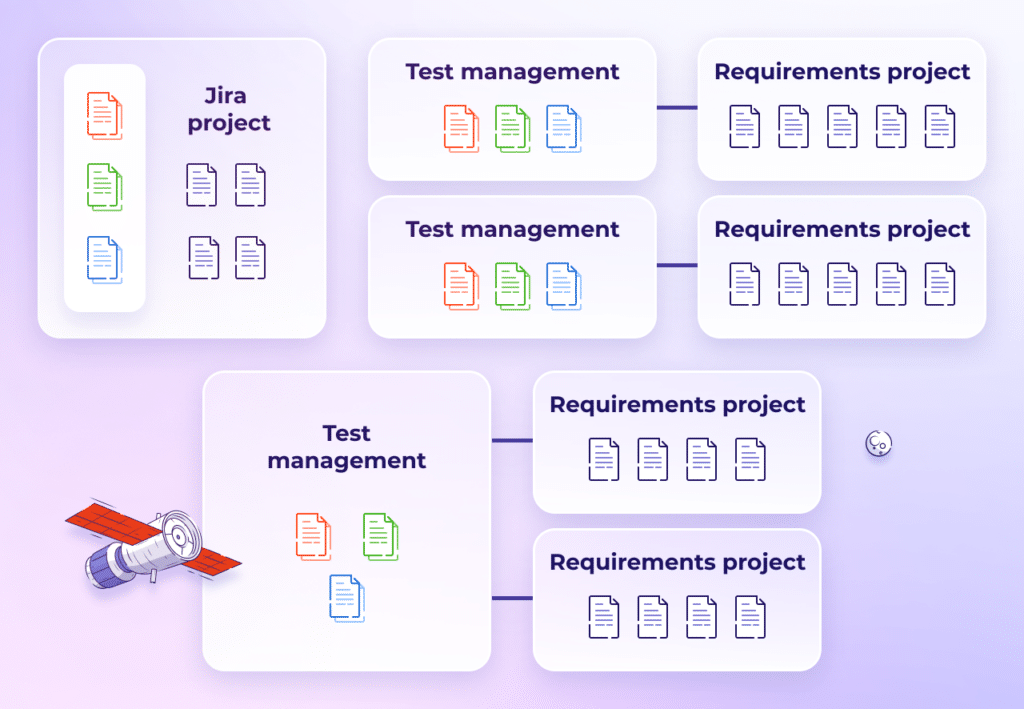Key challenges to software testing in Jira and solutions to them

Updated on April 21, 2021, by Magdalena Korgul, Content Specialist at Deviniti
Surprising as it may seem, most of the problems that testing teams have to deal with every day are non-technical. Tests constitute an important part of software development but unfortunately are often undervalued by other stakeholders. Testing detects bugs before clients, so testers often share unwelcome news. This could be why developers may not welcome them, as more issues mean more work.
It’s essential to recall that software product development involves various individuals with distinct roles, all aiming for top-quality assurance. The initial key to success is mutual understanding and awareness of potential issues. In this article, we’ll show you how we’ve grouped common tester challenges, which are easier to resolve than you might imagine.
The most common testing challenges
Communication issues
This one can be a serious problem not only for testers but for each team member during software development. As it was mentioned before, working on a project requires collaboration between a lot of people. When many specialists work together despite challenges, conflicts are almost inevitable. We’re not just talking about the QA teams’ and developers’ relationship; they must align to deliver a complete product.
When it comes to big companies, team members often have to work in different time zones, or there are some management-related issues (for example inadequate test-related risk management or problems with scheduling). It makes it much more difficult to make collaborative decisions on a product when you can’t just walk up to someone’s desk and explain what you have in mind or even talk to them online right away to ask for an opinion.
But distance isn’t the only possible obstacle. Many companies fail to properly integrate testing and engineering processes. They either test components and subsystems prematurely or confront complexity when testing them individually. Setting up a transparent process to get everyone on the same page becomes hard for big teams across different locations, but even harder for those who work in different tools, even while sitting in the same room. A lack of communication usually causes significant delays in delivery, and even budget exceeds.
Solution?
There isn’t one right solution for fixing communication issues within a testing team. In automated testing, the entire team must be aligned, with each member actively participating. Seamless communication among testers, developers, technical architects, and the business team is vital to prevent minor miscommunications that could lead to project failure. To achieve that, we have to implement one consistent information system for the whole organization.
Impossibility of complete testing
Testing software is related to the unnegotiable fact that there are always millions of combinations and possible reasons why something can go wrong. Even testers with a wild imagination are simply not capable of spotting each and every one of them, especially if the release due date is getting closer, and the Project Manager and Product Owner are watching everyone’s back.
The National Institute of Standards and Technology, in its report “The Economic Impacts of Inadequate Infrastructure for Software Testing,” confirms that software typically contains about 2 to 7 defects per thousand lines of code. This results in major systems having hundreds or even thousands of bugs. Today, it’s common to discover consumer products with a few million lines of code.
Solution?
Let’s be honest, there’s never enough time to find and test all alternatives of test conditions. That can be frustrating as well as cause communication issues described in the paragraph above. This is why it’s so important to assign priority to requirements before we move on to the further stages of the project. And that leads us to the next common problem, related to non-sufficient project objectives’ specification.
Lack of requirements documentation
The general rule of every process is that each stage matters equally, but as the figures show, a bug can cost us up to 100 times more when it’s found during the maintenance phase in comparison to requirements gathering! Unfortunately, many testing teams still don’t pay enough attention to the requirements. Certainly, people usually collect them, but testers face numerous issues like inadequate business analysis, stakeholders using various tools for remarks, or overall chaos in this process phase. The case is that requirements must be well-understood by testers so they can test the software properly and prevent defects.
Also, it’s not unlikely that after some time creating test specifications, a team learns that the requirements have changed. Hardware and software are upgrading quickly these days, especially in agile environments. Techniques like Rapid Application Development can produce a new version of the software every week or so. Therefore, requirements specification changes are a huge challenge to testers and lead to abnormally long turnaround times. This implies the QA team must receive updates promptly for any changes in the app’s features or requirements.
Solution?
To ensure a high-quality product, establish clear project objectives, prioritize them, and avoid unnecessary back-and-forth.
Source: The Economic Impacts of Inadequate Infrastructure for Software Testing report by NIST
Unstable environment
Testers don’t always have control over the environment they work in. Usually, there’s more than one testing team member and everyone makes changes during the process. It’s hard to keep track of what is deployed in the current build and what isn’t.
Developers frequently make changes in the test environments to address defects or introduce new issues. However, the development team doesn’t always inform the QA team about these updates, causing disorder by making testing challenging without up-to-date information on the app’s status.
Solution?
It may seem that more test environments would solve the problem, but it’s not that simple. More test environments may signify a slower server and poorer quality, but above all, it makes regression testing almost impossible. Last but not least, it has to be remembered that the system may behave differently during tests than during actual operations. The problem of an unstable environment often stems from a lack of communication. This is why we always have to sort this issue first before going forward to solving more complex problems.
Visit our blog and read more about testing challenges and tips to solve them!
Many problems, one solution?
In an ideal scenario, we should store all requirements, development tasks, test cases, and defects in one place. This central location should enable us to organize and track relationships between these elements throughout the development lifecycle. This approach facilitates clear communication among developers, analysts, and testers, and streamlines managers’ oversight of the entire software project with real-time updates. Jira Software can serve as this command center if we integrate requirements and tests into it.
Except for being a project management tool, Jira was originally created to detect bugs, so it appears to be a perfect choice for this purpose. If we’re just starting and don’t have a big team, we can even start right out of the box and create a single project for all requirements and tests. But the more we grow, the more complex the process becomes.
We can add Confluence to store detailed specifications and then just track the workflows and defects in Jira. We can turn on a CI loop in Bamboo or Jenkins to automate repetitive checks on the code. But then we start feeling we would need tighter integration of the tool with the test management process. There are no dedicated test reports, we cannot visualize the structure of the objects inside the project, and everything we need we set up manually with the help of the Jira Admin. This is where dedicated testing apps from the Atlassian Marketplace come into play.
In RTM for Jira, you can verify if all your requirements are covered by related objects
Explore Requirements & Test Management for Jira
Explore the capabilities of extensive test reports and effortless Jira integration. Start now!
Keynotes
Testing is without any doubt a tough game. There are many parts of the process and even more ways they can fail it. Testers face challenges from project inception, defining requirements, to reporting bugs to the development team and managers. Some arise from communication problems with stakeholders, who often view QA teams negatively. Others emerge from recurrent workflow management mistakes in software development projects, as teams persistently adhere to patterns, even if they are counterproductive.
The best first step is always to decide on change and try new solutions. A new testing tool you will make the life of your testers much easier and maximize productivity which will help release the best possible version of the final product the first time around.






